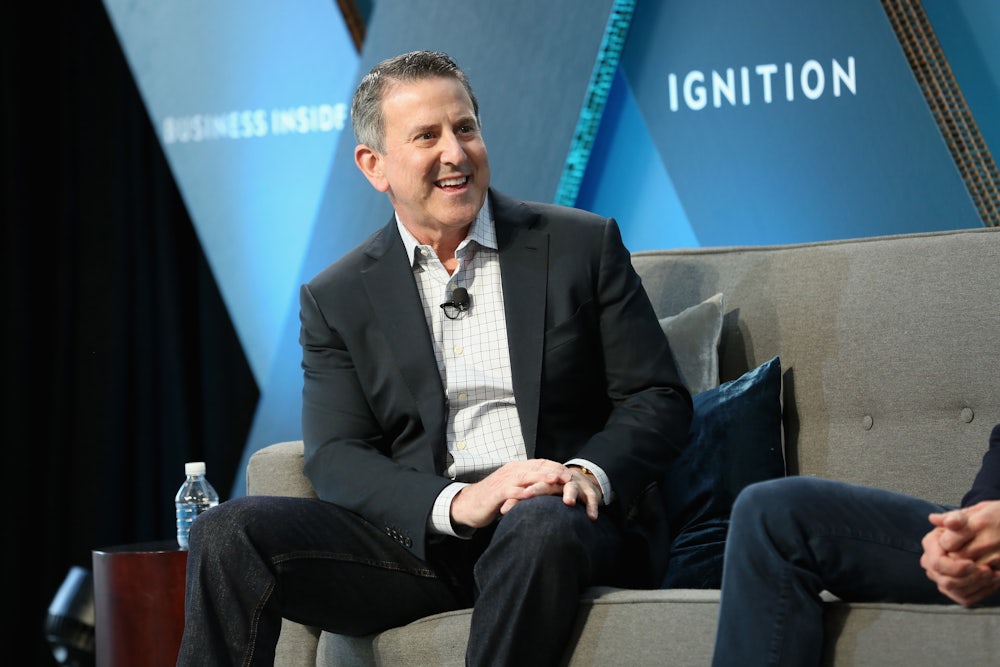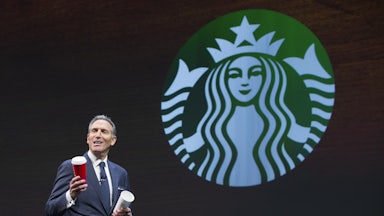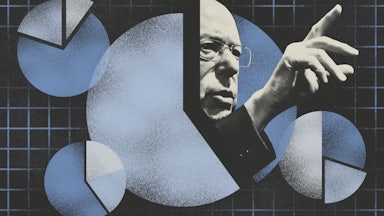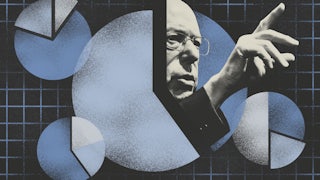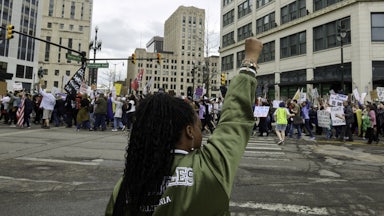Over the years, I’ve heard a lot of shocking facts about just how much CEOs get paid. And like a lot of you, whenever I’ve been confronted with statistics such as “CEO compensation has grown 1,322 percent since 1978,” I didn’t worry too much—it probably just reflected how awesome CEOs had become! But when I delved deeper, I discovered that America’s business leaders are getting exorbitantly more compensation and becoming famous as they become worse, not better, at their jobs. They’re manufacturing self-crashing planes, inventing pretend blood-extraction machines that extract money from gullible people via fraud, creating nonsensical office rental businesses with cuckoo-bananas market capitalizations. Most recently, Starbucks now wants to become a nonfungible token business as its workers try to unionize. Instead of a one-thousandfold increase in the quality of corporate leadership, it’s Juicero all the way down.
Fortunately, the Institute for Policy Studies, or IPS, has been hard at work chronicling the wretched excess of our CEOs—and its work has been especially essential as the pandemic years have exacerbated the growing inequality between the C-suite and the rank and file. Last year, IPS exposed how many of the S&P 500 firms offering the lowest median wages to their workers boosted executive pay using a variety of tricks and rule changes. Its newly released 2022 report on executive excess finds that corporate America’s “largest low wage employers” are at it again, siphoning off piles of money to line executives’ pockets while essential workers go wanting.
According to IPS’s findings, the pay gap between CEOs and workers has widened to an unprecedented level in the past year. At more than one-third of the 300 companies IPS surveyed, “median worker pay did not keep pace with inflation.” At the same time, the “average gap between CEO and median worker pay” in the firms it examined “jumped to 670 to 1, up from 604 to 1 in 2020,” with 49 companies boasting “ratios above 1,000 to 1.” So if you make $50,000 at one of those companies, your CEO makes as much as $50 million. Most galling of all, “CEO pay at these 300 firms increased by $2.5 million to an average of $10.6 million, while median worker pay increased by only $3,556 to an average of $23,968.”
This year, IPS went deep into detailing the extent to which the practice of stock buybacks is pushing profits for the few at the top at the expense of everyone else. Two-thirds of the firms it surveyed “spent billions on stock buybacks.” To put this in perspective, IPS points out that with “the $13 billion Lowes alone spent on share repurchases, the company could have given each of its 325,000 employees a $40,000 raise. Instead, its median pay fell 7.6 percent to $22,697.”
As The Harvard Business Review documented in 2020, corporate America has been on a substantial buyback binge. This is great news for the fortunate few who take home the cheddar, but the practice is, it writes, “bad management,” for the simple reason that it’s not a revenue-generating investment for the business or its workers, nor is it a reward for hard work well done. What’s more, argues the Review, “When companies do these buybacks, they deprive themselves of the liquidity that might help them cope when sales and profits decline in an economic downturn.” TNR contributor Bruce Bartlett savaged stock buybacks on these pages in 2020. He referred to the practice as one of the worst products of Milton Friedman’s “shareholder revolution” and its attendant “decline in labor’s share of national income, higher pay for corporate executives and greater income inequality, reduced corporate investment, and slower economic growth.”
Bartlett also points out that because managers can time when stock buybacks happen, they are able to use the practice to “manipulate stock prices for their own benefit.” This side of the buyback scam has also earned the fury of Massachusetts Senator Elizabeth Warren, who has bluntly referred to the practice as “paper manipulation,” made possible by a Reagan-era rule that effectively holds corporations harmless from allegations of stock-price manipulation through share buybacks.
What can be done? Senators Ron Wyden and Sherrod Brown have proposed the Stock Buyback Accountability Act, which would generate revenue by imposing an excise tax on buybacks. But IPS recommends that Biden act unilaterally to give firms with healthier CEO-to-median worker pay ratios preferential treatment in federal contracting—if not outright restricting wayward corporations from receiving federal dollars altogether. Over the longer term, however, we need labor to have a stronger hand in corporate governance by giving more workers ownership rights in their own firms. Considering the extent to which corporate power is to blame for the sabotaging of the Build Back Better Act and financing former President Trump’s next assault on our democracy, there’s never been a better time to give ordinary Americans a larger voice.
As TNR’s Osita Nwanevu reported in 2020, cutting workers in on big corporate decisions is a popular idea: A 2019 YouGov poll found that “a remarkable 55 percent of voters would strongly or somewhat support a proposal requiring companies with over 250 employees to gradually put half of their shares into a workers’ fund,” he wrote. This would allow workers to have more say in their firms’ big decisions. Providing the labor force more wealth, political power, and stability fits in well with a larger Good Life agenda. Corporate elites used the pandemic to line their pockets. Now it’s time for the essential workers who do the actual work to get their reward for carrying the country through the crisis.
This article first appeared in Power Mad, a weekly TNR newsletter authored by deputy editor Jason Linkins. Sign up here.
